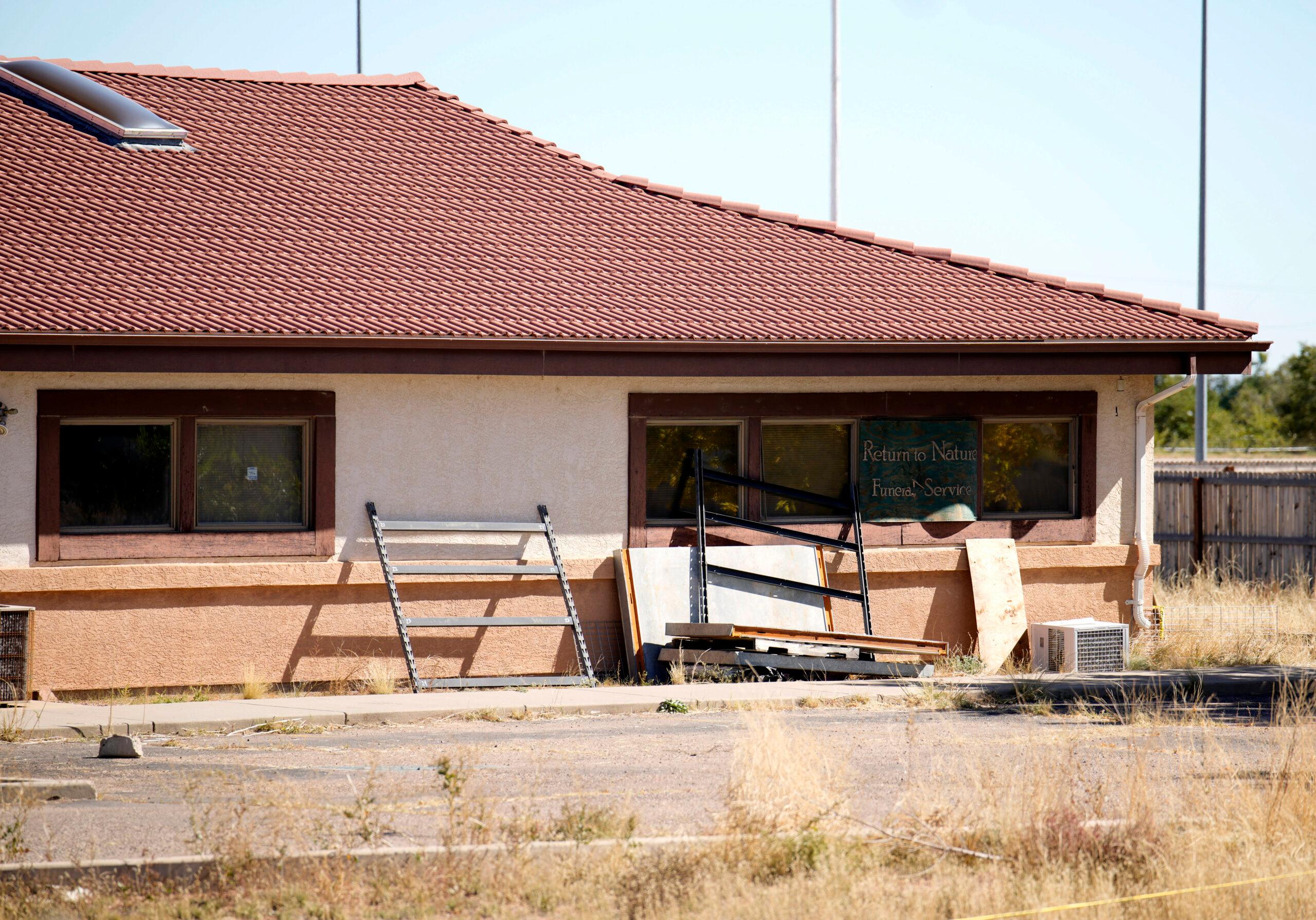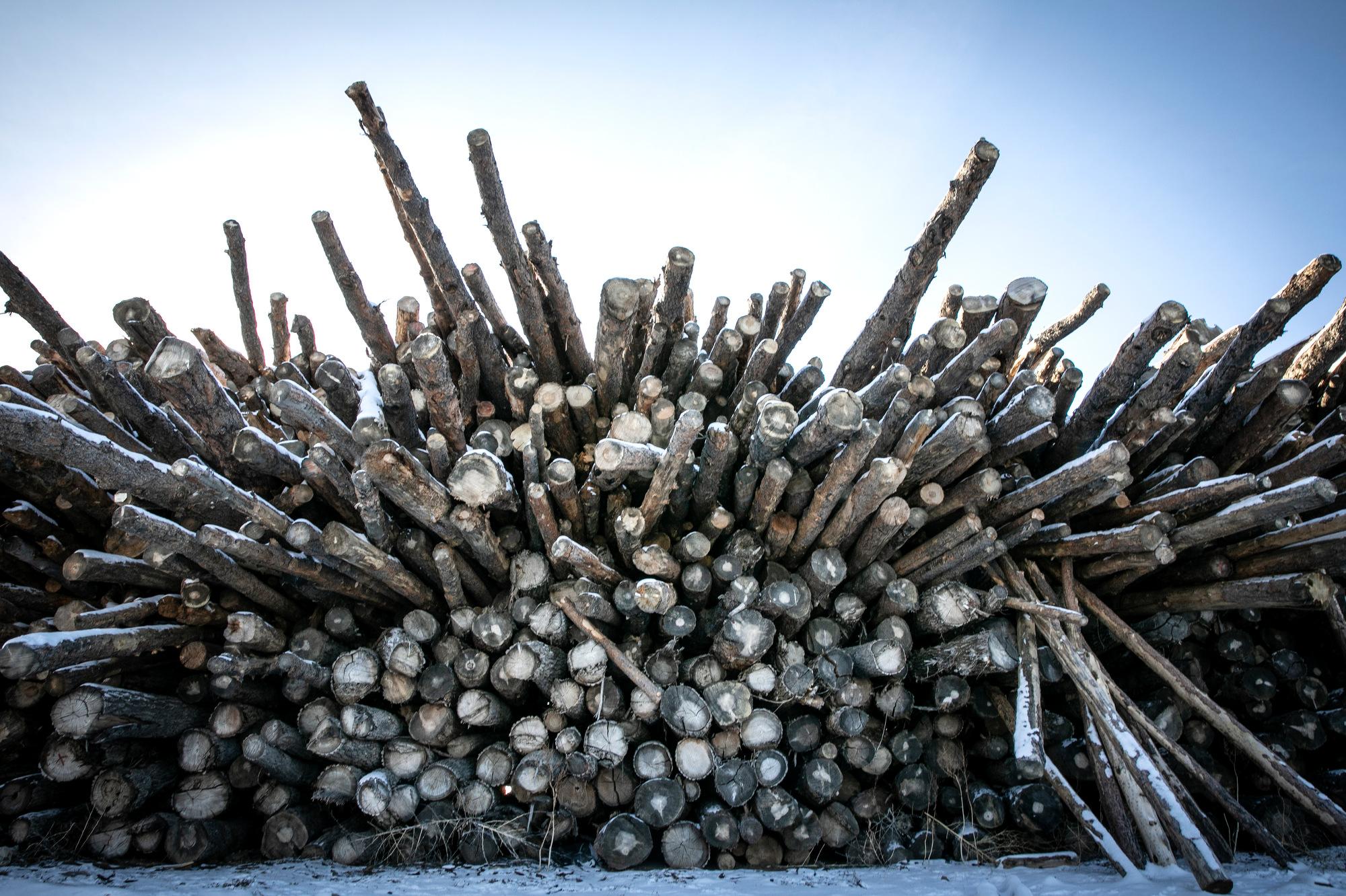
If there’s a piece of wood out there, James Gaspard will probably take it.
The 17 acres his company owns in Berthoud, Colo., is stacked with rejected trees from across the state. The beetle-kill branches and fire-scarred trunks wait to be fed into 100 massive kilns, which look like a fleet of rusty UFOs landing in the farmland below Longs Peak.
His company, Biochar Now, uses the contraptions to convert wood into biochar, a carbon-rich charcoal that can help soil retain water and nutrients.
Gaspard said the cannabis industry has been an early and loyal customer, but he sees vast possibilities beyond agriculture. In his office, he showed off newer product ideas: cat litter, animal feed, water filters, plastic, soap — all made from wood usually treated as trash.
“We’re making a market for stuff that had no market,” Gaspard said.
As Colorado recovers from its worst wildfire season in recorded history, many foresters see entrepreneurs like Gaspard as essential. Products like biochar could provide the financial motivation for fire mitigation products, which reduce fuels but also creates massive piles of unwanted timber.
It’s difficult to overstate the size of the problem. Much of Colorado’s 24 million acres of woodlands are overgrown after decades of fire suppression. Climate change is also likely to leave forests warmer and drier, further increasing the risk of disastrous wildfire seasons.
Logging, in specific cases, could be one of the few ways to confront the crisis. Studies have found tree thinning can help mitigate against megafires depending on the type of forest. Fuel breaks can also give firefighters defensible space to protect homes and communities.
Tim Reader, a forest products specialist with the Colorado State Forest Service, said the biggest barrier to the work problem is money. According to the agency’s 2020 action plan, treating the 10 percent of Colorado forest most prone to wildfire —an area the size of Delaware — could cost $4.2 billion.
“These fuel treatments are tremendously expensive,” Reader said. “It also generates a tremendous volume of wood we simply do not have the capacity to process and manufacture.”
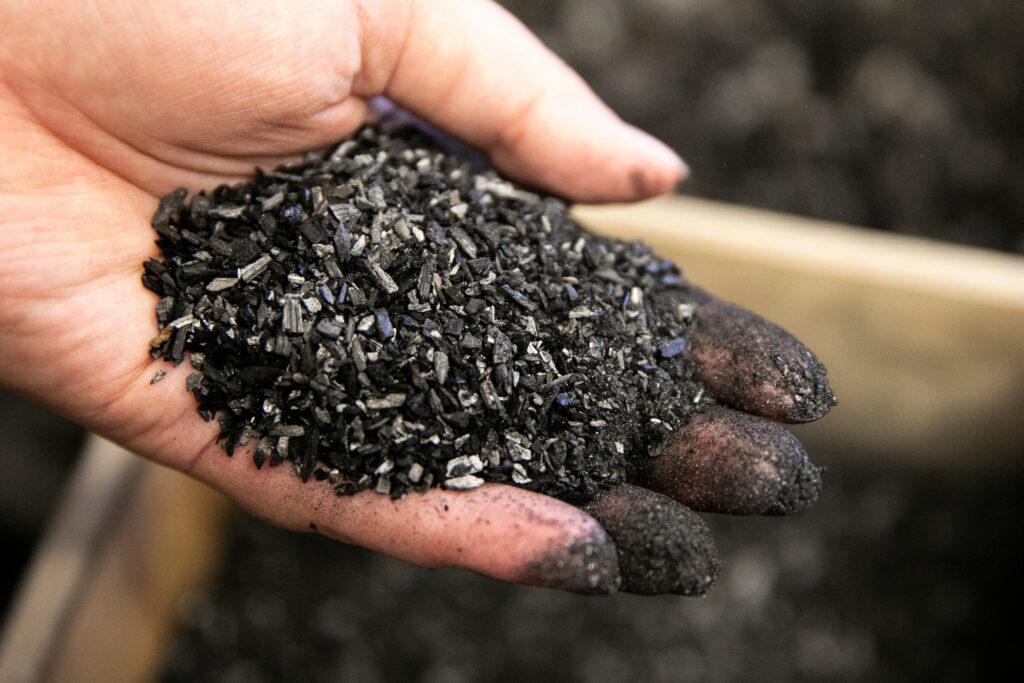
A missing industry
Colorado once had a larger timber industry, Reader said. Since the 1970s, many of the state’s sawmills have closed as the U.S. Forest Service protected land for wildlife and recreation.
In the following decades, the lumber industry shifted to rely on faster-growing forests in the northwest and southeast. In 2016, there were 55 primary wood processing facilities in the state, down from 133 in 2002, state forest service records show.
Even if those mills suddenly reopened, Reader said the wood coming from Colorado’s fire mitigation projects is almost always too narrow, gnarled or diseased to make a good two-by-four. To cut the cost of fuel reduction projects, he said Colorado needs a new type of lumber industry.
“You have to invest in a lot more engineering, a lot more manufacturing technology,” he said.
- After Years Of Tough Lessons, Spanish-Speaking Communities Rise To Get Wildfire Information Fast And In Their Language
- Foresters Want More Prescribed Burns To Avoid Future Wildfire Disasters In Colorado. But The State Forest Service Isn’t Allowed To Conduct Them
- When The Wilderness Meets The Urban, Homeowners And Neighbors Are On Their Own Against Wildfires
- Stronger Building Codes And Other Rules Can Save Homes From Wildfires. So Why Doesn’t Colorado Have A Statewide Law Mandating Them?
- Colorado’s East Troublesome Wildfire May Signal A New Era Of Big Fire Blow-ups
Some of the work is already underway. In 2009, the Colorado legislature passed a bill to provide loans to businesses trying to use wood from fire mitigation projects. Together with private partners, the program has distributed about $5 million over the last decade.
Andy Hinz received a state forestry service grant in 2015 to jump start Golden West Pine Mills, which helped landowners clean up after the Black Forest Fire.
On a chilly afternoon last December, he fired up his sawmill in Ault, Colo., to slice boards from a recent fire mitigation project his company completed just south of the Wyoming border.
Each cross-section had the distinct blue stain of wood killed by pine beetles, which occurs from a fungus the insects bring with them beneath the tree bark.
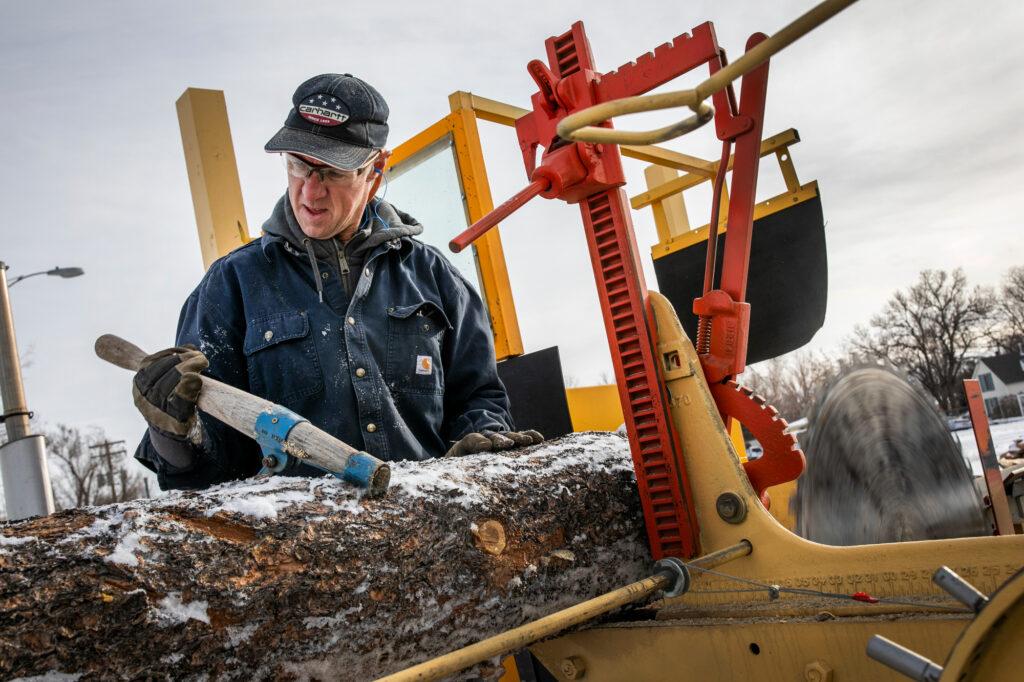
The color has made the beetle-kill wood a favorite choice for display pieces. The boards Hinz cut became taxidermy mounts. His company also makes barn doors, bar tops and tabletops from locally sourced wood.
Hinz has seen demand for his products spike during the coronavirus pandemic as more people renovate their homes or take up a woodworking hobby. He now has a hard time finding enough raw material to satisfy customers.
While there are plenty of trees to thin, the federal government controls two-thirds of the forested land in Colorado and offers complex contracts for mitigation work.
“It’s just such a hassle for a small business like myself to do business with the federal government,” Hinz said.
That’s why Hinz tends to work with private landowners, which can offer a more straightforward arrangement.
Reader said government subsidies can help encourage fuel reduction on public land. Gov. Jared Polis’ most recent budget request asks for an additional $6 million for the state forestry service’s fire mitigation grant program.
Congressman Joe Neguse, a Democrat representing Colorado’s 2nd district, has called for far more funding for similar federal programs and proposed a 21st Century Conservation Corps to put young people to work on fuel reduction projects.
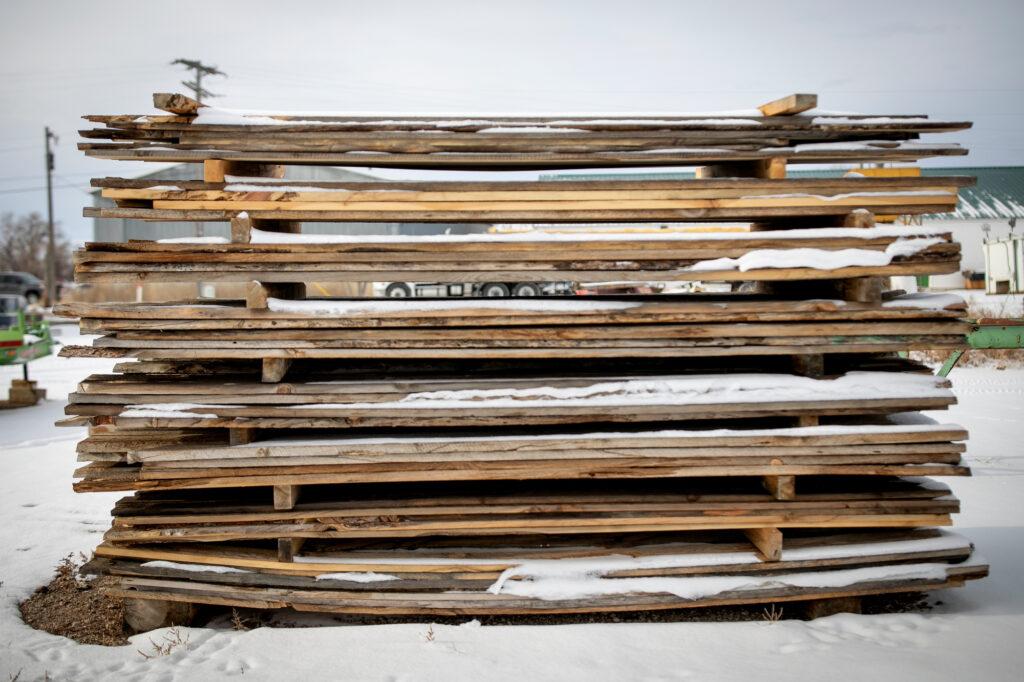
Wooden consumer habits
While subsidies help, business owners say consumers also have a role to play.
Andy Hawk works as the chief communications officer for Timber Age Systems, a Durango startup that turns ponderosa pine into panels of cross-laminated timber. The technology has enabled a new class of wooden skyscrapers rising around the globe. Hawk’s company is trying to scale it down into panels for single- and multi-family homes.
“It’s a major change in mindset,” he said. “We have built with two-by-fours, two-by-sixes, two-by-eights for the last 150 years. And really our building technologies have not changed that much in that amount of time.”
Right now, Hawk said his company is focused on small-scale projects, like single structures and outdoor kitchens. In five years, he hopes a group of architects and builders have learned how to use the panels in larger buildings.
It’s a similar story across Colorado’s emerging wood businesses. The companies could help protect against forest fires, but only if they grow from niche startups into full-blown industries.
Otherwise, they’re nibbling at the edges of a 2.4 million-acre problem.



















